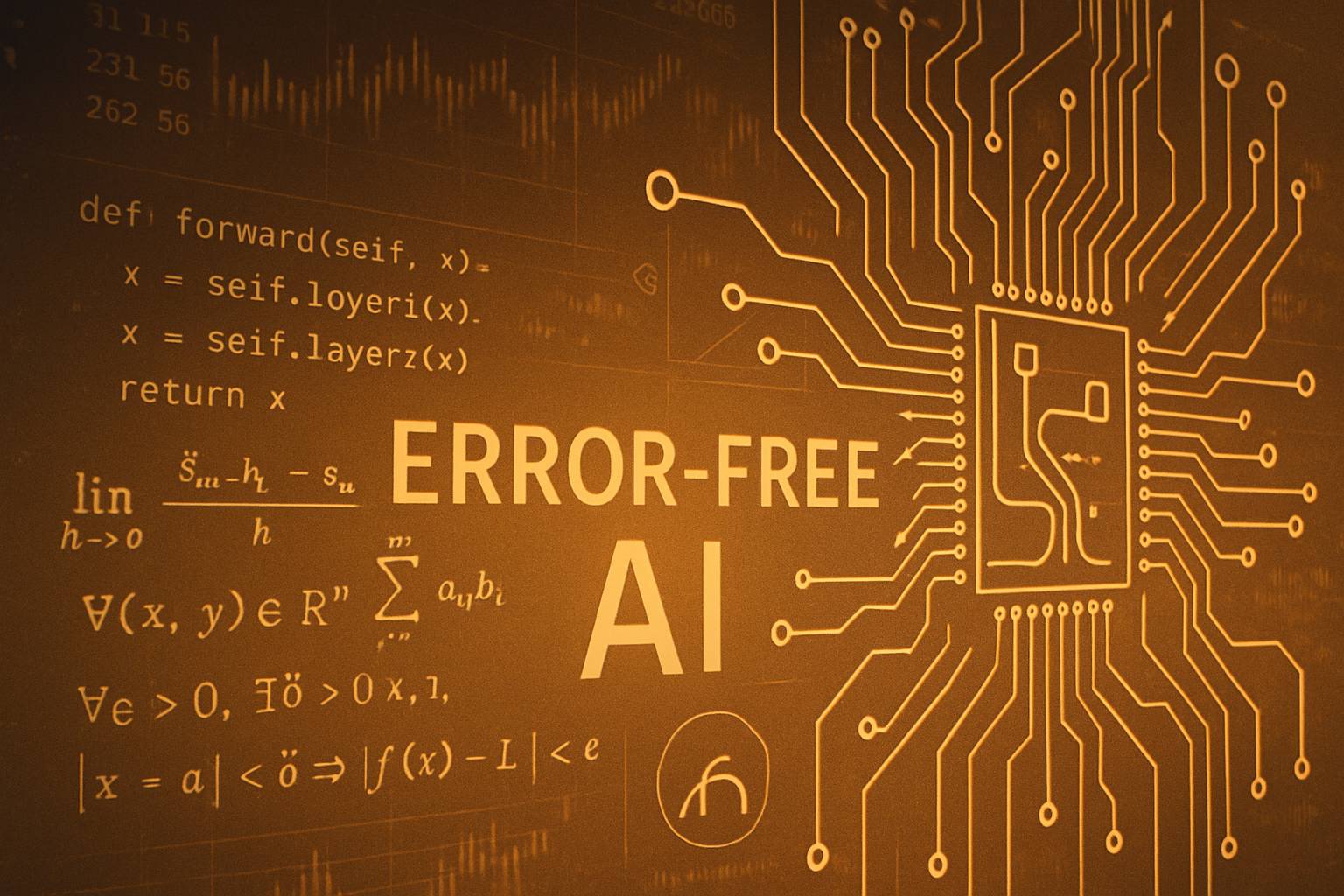
AI CERTS
1 day ago
Harmonic’s Bid for Error-Free AI Hits $1.45B Valuation

Consequently, its post-money figure now stands at the much-discussed $1.45B Valuation.
Meanwhile, Robinhood CEO Vlad Tenev serves as executive chairman, adding mainstream visibility.
Chief executive Tudor Achim claims the group's Aristotle model executes provable reasoning in Lean4.
Therefore, supporters argue the technology could deliver consumer-grade Reliability that traditional large models lack.
Media outlets describe this approach as a practical path toward truly Error-Free AI.
Nevertheless, skeptics note unresolved questions, from benchmark transparency to monetization timing.
Regulatory momentum around AI safety further amplifies the startup’s narrative.
This article dissects the money, math, and market forces shaping the story.
Series C Growth Momentum
The latest Funding surge arrived on 25 November 2025.
Ribbit Capital led the round, while Sequoia and Kleiner Perkins joined again.
Additionally, Emerson Collective entered as a fresh participant, signaling long-term confidence.
- 2025 Series C: $120 million, post-money $1.45B Valuation
- 2025 Series B: $100 million, nearly $900 million valuation
- 2024 Series A: $75 million seed expansion
- Total disclosed Funding: roughly $295 million to date
Collectively, these injections propelled the startup to a $1.45B Valuation in under three years.
Such accelerating capital flows highlight market impatience for Error-Free AI at enterprise scale.
In contrast, the company must translate hype into provable results, a topic explored next.
Inside Mathematical Superintelligence Vision
At the center lies Aristotle, the firm’s so-called Mathematical Superintelligence.
Unlike probabilistic chatbots, Aristotle outputs Lean4 code that external verifiers can check line by line.
Furthermore, Achim insists this design eliminates hallucinations and drives measurable Reliability.
Consequently, enthusiasts dub the system an engine for Error-Free AI in quantitative domains.
The lab states Aristotle achieved gold-medal status at the 2025 International Mathematical Olympiad.
Nevertheless, independent journalists have not replicated those results, leaving evidence gaps.
Subsequently, the team published demo videos showing Lean4 proofs replayed inside the browser.
Observers noted the interface feels closer to collaborative coding than conversational search.
The vision promises rigorous reasoning and, eventually, consumer trust.
However, the technical path demands robust verification pipelines, discussed in the following section.
Formal Verification Approach Detailed
Formal methods anchor the entire architecture.
Lean4 serves as programming language and proof checker, mirroring AWS Guardrails strategies.
Moreover, each Aristotle response includes a proof script, enabling deterministic validation.
Therefore, stakeholders view the workflow as a stepping stone toward industrial Reliability.
Still, formal verification secures correctness only relative to the supplied specification.
In contrast, ambiguous real-world tasks resist complete formalization, potentially limiting Error-Free AI coverage.
Engineers integrate SMT solvers to automate portions of the checking pipeline, reducing manual overhead.
Nevertheless, failure cases still trigger human review to preserve safety guarantees.
Key benefits cited by the team include:
- Deterministic error detection before deployment
- Improved audit trails for regulators
- Greater developer confidence in model outputs
These advantages paint a compelling picture.
Yet, money and risk perceptions ultimately shape adoption, which investors understand well.
Investor Perspectives And Risks
Venture partners describe the raise as a rational bet on differentiated tooling.
Nick Shalek of Ribbit praised the lab’s technical pace.
Simultaneously, analysts warn that a $1.45B Valuation without revenue tightens execution pressure.
Moreover, spiraling compute costs could inflate burn if commercial traction stalls.
Growing Reliability Concerns Today
Investors like Emerson Collective demand measurable Reliability metrics before advancing additional Funding.
Nevertheless, the startup still touts Error-Free AI as its primary differentiator.
In contrast, some portfolio managers remember earlier formal-methods startups that struggled with sales cycles.
Capital abundance offers runway, yet expectations loom.
Commercial pathways therefore merit deeper attention.
Commercial Roadmap Challenges Ahead
The company markets an Aristotle API and lightweight mobile apps.
However, pricing, service-level agreements, and compliance guarantees remain unpublished.
Potential customers in aerospace and finance require strict compliance certifications.
Additionally, enterprise pilots must align with governance standards for Error-Free AI.
Professionals can enhance expertise through the AI+ Network Security™ certification.
The program emphasizes secure model integration and audited deployment pipelines.
Subsequently, those credentials may reassure procurement teams evaluating high-stakes deployments.
Meanwhile, procurement leaders prioritise integration simplicity with existing Python or TypeScript stacks.
Therefore, the startup offers wrappers and SDKs to shorten proof-as-a-service onboarding.
Viable revenue hinges on matching proof technology with buyer pain points.
Clear messaging around return on investment may shorten notoriously slow enterprise sales cycles.
Competitive forces may accelerate that timeline, as the next section explains.
Industry Context And Competition
Major cloud vendors now embed automated reasoning checks within generative services.
Consequently, differentiation for this lab rests on deeper mathematical focus rather than generic guardrails.
Competitors like Anthropic and OpenAI also chase Error-Free AI, albeit through language model scaling.
Meanwhile, academic groups experiment with similar Lean4 datasets, eroding exclusivity.
Regulators also explore requiring proof artifacts for systems influencing financial decisions.
However, Harmonic argues its rigorous Olympiad benchmarks set it apart.
Independent verification will determine whether that claim sustains investor patience and additional Funding.
Such mandates could rapidly expand the accessible market for mathematically verified tooling.
Competitive pressure is intensifying, yet formal verification remains a rare offering.
The final section synthesizes lessons and outlines strategic next steps.
Conclusion And Outlook Ahead
Harmonic now embodies the broader quest for Error-Free AI within critical knowledge work.
Its $1.45B Valuation reflects investor belief that formal proofs can translate into durable Reliability.
However, the generous Funding also magnifies accountability for transparent benchmarks and fast monetization.
Moreover, enterprises will adopt only when the platform demonstrates scalable, domain-specific performance.
Consequently, delivering Error-Free AI beyond mathematics remains the decisive hurdle.
Readers seeking to guide such integrations should pursue recognized credentials and ongoing audits.
Additionally, ongoing community audits will either confirm or challenge Aristotle’s standout metrics.
Explore certification pathways now and remain prepared for the coming verification-first future.



